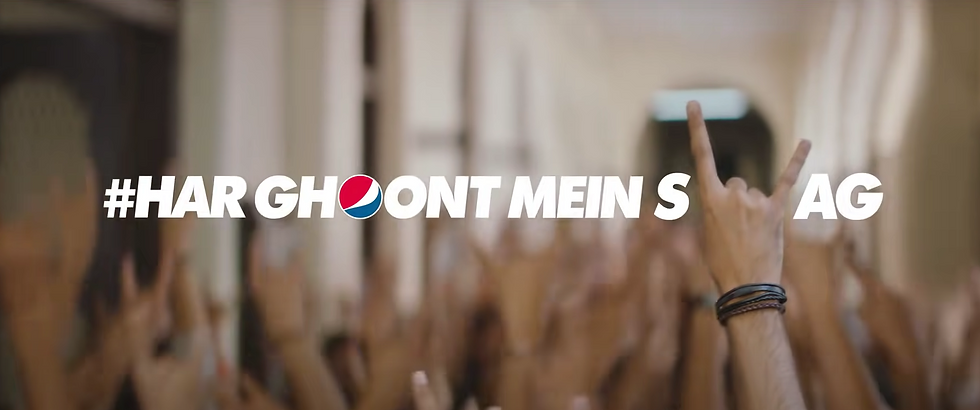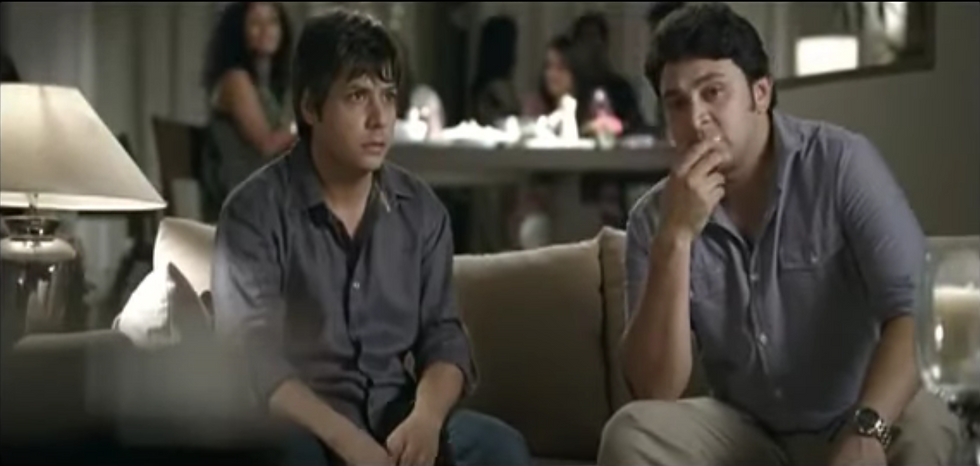The Psychology Behind Indian Advertisements
- Raghav Gupta
- May 2, 2021
- 4 min read

Marketing can change how people perceive your brand and uplift your finances to superior levels if executed well. It is not the competition but the consumer’s psychology and trust that acts as a natural barrier. Let’s look at some of the well-designed ad-run campaigns and check out how they flawlessly portrayed their message and won the hearts of their targeted consumer base.
1) PEPSI, THE TASTE OF SWAG

Har Wrong Ko Right Banade
Awesome Ka Tag Lagade
Har Ghoont Mei SWAG Hai...
WHOM IS THE ADVERTISEMENT TARGETING?
The advertisement targets the aspirations of today’s generation, who are fun-loving and want to impress their peers with their limited means.
THE PSYCH GAME
✓Pepsi, through these two advertisements, communicated with the consumers in the consumer’s language.
✓They reinforced the current trend, which is having “SWAG.”
✓Pepsi worked with the community to build loyalty and connectivity with the vast Indian teenager population.
THE CLEVER MOVE
Advertisement 1-

In the ad, the Principal says, “No jackets, no caps, no t-shirts, no jeans”; what remains with the college boy is his “swag,” which fulfills his desire to live his college life to the fullest and be a popular role model among his peers.
THE CLEVER SETUP
Advertisement 2-

The inability to go inside the club due to the unavailability of a ticket, dress code, and handsome amount of money while having the urge to enjoy, brought out the fascinating roadside setup of “party time.” It appealed so much to the viewers as it gave the message, “Pepsi can make bad things go right.”
THE DEEP MESSAGE
✓ The advertisement hooks the consumers towards a rationale thinking of adopting “Pepsi” as that refreshing partner and not just a wrapped plastic bottle.
✓ An engaged customer is the best marketing strategy that Pepsi focused on, and it boosted its sales numbers through these beautiful advertisements.
2) SHAADI.COM
They targeted the single people in the age segment of 23-30 who are uncertain about their better half.
CONSUMER’S ASPIRATION
Kaun Hoga,Shayad Ye Hoga, Shayad Wo Hoga
COMPANY’S COMMITMENT

Shayad.com Se Shaadi.com
The whole thing goes like this: Story -> Relationship -> Trust -> Revenue
THE DEEP MESSAGE
Look through the customer’s eyes, and it will create the strongest bond for a lifetime.
3) ALL OUT

Change the way you look at woman’s success. She is unstoppable now.
Here, in the advertisement, the daughter-in-law serves the meal to the entire family. She is the one who faces the harsh words of other family members, stays silent, and accepts the scolding ruthlessly.
But at the end of the advertisement, she is portrayed as a “real hero” when her Father-in-law supports her, realizing; she was correct in her cause.

The next scene pictures her plugging in “All Out” as a responsible mother, wife, daughter who trusts that device to protect her family members.
WHAT DID ALL OUT DO?
It identified the consumer’s personality (personality, pain, problem, aspiration, needs, goal, strength) and smartly linked the daily, busy life of a woman to switching on that All Out device at the end of the day.
Because when you stand as a tough mother, you stand with your next generation.
4) SEAGRAM
The biggest challenge was that they could not directly pitch or advertise their product as promoting ‘alcohol’ through public platforms is prohibited. Seagram identified the target market as middle-aged people between 25-45. They showed the typical habits of a man in the age category who wants to look classy, has quarrels with his wife, wants to impress his co-workers, and hangs out with his friends.
Everybody is asking the man in the advertisement, “What happened to you?”

In the end, one of the guys says that ‘His wife’s one week official tour has cancelled!’
The advertisement cleverly depicted that ‘Men Will Be Men.’
Every day they are willing to hang out and chill with their friends, especially when the family members are not at home, which acts as barriers to their planned future parties.
5) HYUNDAI
Hyundai wanted to enter the vast Indian market and cater to the varied Indian audience. They knew that Indians are primarily united in these two situations:
✓ India vs. Pakistan Cricket Match
✓ Border Disputes

In the advertisement, the soldier was getting late to arrive at the destination. The Santro owner helped him by dropping him off at the destination on time.
Both of them had the last word where the Santro owner said-

“Jo Desh Ki Duty Par Ja Raha Ho, Uski Duty Sabse Pehle Karo”
Hyundai gave a strong message that we are an Indian company by heart; we respect Indian soldiers. They captured the patriotic sentiment of the country’s most significant middle-class segment.
CONCLUSION
Don’t tell me how good you make it; tell me how good it makes me when I use - Leo Burnett
It is the fundamental mantra to capture your desired audience. A start-up begins as soon as you meet the unmet needs of your customers. The apparent goal at the end was not to push people where the companies wanted them to (i.e., towards their product), but to meet them where they are.
Content is fire, and the community is gasoline.
Edited by - Sarthak Gupta, Shashank Gupta








Comments